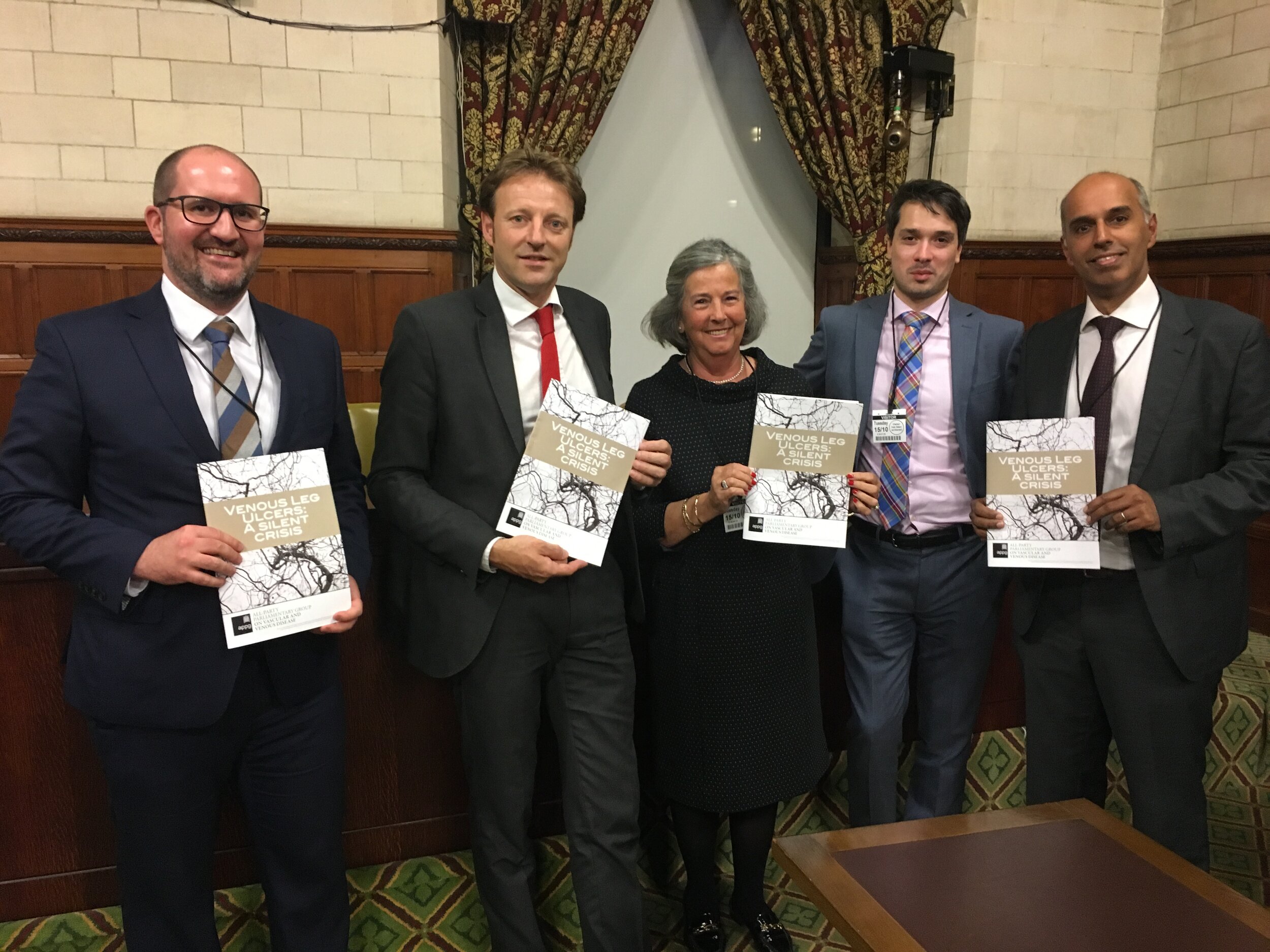Future of Venous Disease: Growing Problems, Shrinking Workforce
Please find a copy of the report here.
Venous leg ulcers (VLU) are persistent wounds of the leg, caused by an underlying circulatory issue in the veins. Unlike most wounds, venous leg ulcers can be hard to heal and can be extremely painful. People with venous leg ulcers require NHS support to promote healing.
Approximately, over 500,000 people live with a form of venous leg ulceration in the UK, a number that has doubled in the past 10 years, with estimated healthcare costs associated with these wounds reaching £2.7 billion annually.
VLUs cause severe patient distress and are prone to becoming infected if not managed well. In extreme cases, the wound can become so large that bone and tendon are exposed. Failure to address the underlying venous disease causing the ulcer can lead to wound recurrence.
Despite the scale of the problem being well known, and guidance being in place to ensure prompt treatment for VLUs, patients still face challenges in receiving treatment. This is in part due to a shrinking workforce and inconsistent commissioning of services.
This report has highlighted the challenges in treating the number of patients with VLUs, and sets out recommendations for Government, NHS England, and local commissioners to ensure that patients receive appropriate care at the right time, in the right place.
In delivering these changes, the NHS could save significant amounts of money and patients would benefit from earlier interventions and better outcomes.
Recommendations
For Government
1. Develop a vascular workforce plan in the upcoming Workforce Strategy for Health and Care, with a funded implementation plan.
2. Ensure national adoption and implementation of the recommendations of the National Wound Care Strategy Programme.
3. Increase the number of training places for vascular surgeons to 30-40 from current levels.
For the NHS
4. NHS Workforce, Training and Education (formerly Health Education England (HEE)) to deliver venous disease education programmes across primary, community, and secondary care in England, including utilising existing education resources such as eLearning for Health and National Wound Care Strategy Programme for pre-registration programmes, and within the existing qualified workforce.
5. Increase the training available to non-medics to support in the diagnosis and treatment of venous patients, including vascular nurses and vascular technicians.
For Local Commissioners
6. Ensure commissioning policies are aligned to NWCSP Lower Limb Recommendations, which incorporate NICE guideline CG168 and the SIGN Clinical Guideline.
7. Ensure local NHS Providers prioritise staff and resources to assessing and treating venous disease.











